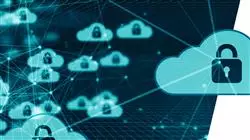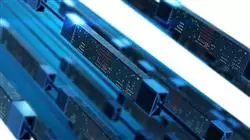University certificate
The world's largest faculty of information technology”
Introduction to the Program
In the next few years, the CD will become obsolete. Get ahead of the change and learn how to develop software in the cloud thanks to this Postgraduate diploma"

Setting an end date for the use of CDs is very complicated. As in other fields such as journalism, it is to be expected that the physical and digital formats will coexist for many years to come. However, the trend is clear and cloud software will eventually prevail. In fact, some companies such as the supermarket chain Tesco, the industry leader in the UK, Ireland, Hungary, Malaysia and Thailand, have already stopped selling CDs and DVDs.
To respond to this trend, TECH has created a program that delves into all areas of Cloud Software. Highlighting benefits such as scalability, which allows increasing or decreasing capacity according to demand; or availability and resilience, with fault-resistant architectures.
Specific fields such as native development, monitoring, interaction with Command Line Interface, interaction based on APIs or code integration with scripting will also be discussed. Always accompanied by experts who will solve the most technical doubts.
Students should be aware that this degree is offered online, without timetables and with all the contents available from the first day. All you need is a device with an internet connection. In addition, an innovative and proven methodology has been proposed that presents the contents in different formats with the possibility of selecting the one preferred.
In the first module you will learn how to work with different cloud deployment options such as Multi-Cloud or Hybrid Cloud"
This Postgraduate diploma in Cloud Software contains the most complete and up-to-date educational program on the market. The most important features include:
- The development of case studies presented by cloud software experts
- The graphic, schematic, and eminently practical contents with which they are created, provide scientific and practical information on the disciplines that are essential for professional practice
- Practical exercises where self-assessment can be used to improve learning
- Its special emphasis on innovative methodologies
- Theoretical lessons, questions to the expert, debate forums on controversial topics, and individual reflection assignments
- Content that is accessible from any fixed or portable device with an Internet connection
Android and iOS are the two largest generators of mobile Cloud Software. Therefore, a comparison between the two has been carried out covering several topics"
The program’s teaching staff includes professionals from sector who contribute their work experience to this training program, as well as renowned specialists from leading societies and prestigious universities.
The multimedia content, developed with the latest educational technology, will provide the professional with situated and contextual learning, i.e., a simulated environment that will provide immersive training programmed to train in real situations.
This program is designed around Problem-Based Learning, whereby the Professional must try to solve the different professional practice situations that arise during the academic year. This will be done with the help of an innovative system of interactive videos made by renowned experts.
In TECH you will learn about the possibilities offered by high-performance cloud computing"

Security is one of the biggest challenges of cloud software. Our trainers will teach you the best ways to protect your applications"
Why study at TECH?
TECH is the world’s largest online university. With an impressive catalog of more than 14,000 university programs available in 11 languages, it is positioned as a leader in employability, with a 99% job placement rate. In addition, it relies on an enormous faculty of more than 6,000 professors of the highest international renown.

Study at the world's largest online university and guarantee your professional success. The future starts at TECH”
The world’s best online university according to FORBES
The prestigious Forbes magazine, specialized in business and finance, has highlighted TECH as “the world's best online university” This is what they have recently stated in an article in their digital edition in which they echo the success story of this institution, “thanks to the academic offer it provides, the selection of its teaching staff, and an innovative learning method aimed at educating the professionals of the future”
A revolutionary study method, a cutting-edge faculty and a practical focus: the key to TECH's success.
The most complete study plans on the university scene
TECH offers the most complete study plans on the university scene, with syllabuses that cover fundamental concepts and, at the same time, the main scientific advances in their specific scientific areas. In addition, these programs are continuously being updated to guarantee students the academic vanguard and the most in-demand professional skills. In this way, the university's qualifications provide its graduates with a significant advantage to propel their careers to success.
TECH offers the most comprehensive and intensive study plans on the current university scene.
A world-class teaching staff
TECH's teaching staff is made up of more than 6,000 professors with the highest international recognition. Professors, researchers and top executives of multinational companies, including Isaiah Covington, performance coach of the Boston Celtics; Magda Romanska, principal investigator at Harvard MetaLAB; Ignacio Wistumba, chairman of the department of translational molecular pathology at MD Anderson Cancer Center; and D.W. Pine, creative director of TIME magazine, among others.
Internationally renowned experts, specialized in different branches of Health, Technology, Communication and Business, form part of the TECH faculty.
A unique learning method
TECH is the first university to use Relearning in all its programs. It is the best online learning methodology, accredited with international teaching quality certifications, provided by prestigious educational agencies. In addition, this disruptive educational model is complemented with the “Case Method”, thereby setting up a unique online teaching strategy. Innovative teaching resources are also implemented, including detailed videos, infographics and interactive summaries.
TECH combines Relearning and the Case Method in all its university programs to guarantee excellent theoretical and practical learning, studying whenever and wherever you want.
The world's largest online university
TECH is the world’s largest online university. We are the largest educational institution, with the best and widest online educational catalog, one hundred percent online and covering the vast majority of areas of knowledge. We offer a large selection of our own degrees and accredited online undergraduate and postgraduate degrees. In total, more than 14,000 university degrees, in eleven different languages, make us the largest educational largest in the world.
TECH has the world's most extensive catalog of academic and official programs, available in more than 11 languages.
Google Premier Partner
The American technology giant has awarded TECH the Google Google Premier Partner badge. This award, which is only available to 3% of the world's companies, highlights the efficient, flexible and tailored experience that this university provides to students. The recognition as a Google Premier Partner not only accredits the maximum rigor, performance and investment in TECH's digital infrastructures, but also places this university as one of the world's leading technology companies.
Google has positioned TECH in the top 3% of the world's most important technology companies by awarding it its Google Premier Partner badge.
The official online university of the NBA
TECH is the official online university of the NBA. Thanks to our agreement with the biggest league in basketball, we offer our students exclusive university programs, as well as a wide variety of educational resources focused on the business of the league and other areas of the sports industry. Each program is made up of a uniquely designed syllabus and features exceptional guest hosts: professionals with a distinguished sports background who will offer their expertise on the most relevant topics.
TECH has been selected by the NBA, the world's top basketball league, as its official online university.
The top-rated university by its students
Students have positioned TECH as the world's top-rated university on the main review websites, with a highest rating of 4.9 out of 5, obtained from more than 1,000 reviews. These results consolidate TECH as the benchmark university institution at an international level, reflecting the excellence and positive impact of its educational model.” reflecting the excellence and positive impact of its educational model.”
TECH is the world’s top-rated university by its students.
Leaders in employability
TECH has managed to become the leading university in employability. 99% of its students obtain jobs in the academic field they have studied, within one year of completing any of the university's programs. A similar number achieve immediate career enhancement. All this thanks to a study methodology that bases its effectiveness on the acquisition of practical skills, which are absolutely necessary for professional development.
99% of TECH graduates find a job within a year of completing their studies.
Postgraduate Diploma in Cloud Software
.
If you are interested in developing your technology skills and becoming a cloud software expert, the Postgraduate Diploma in Cloud Software educational program at TECH Global University is just what you need. In this online classroom program, you will learn everything you need to know about how to develop and deploy applications in the cloud, which will allow you to have a more complete and updated profile in today's job market. Our educational program is designed to provide you with complete and detailed information, from programming to implementation and maintenance of cloud solutions, as well as integration with other technologies and systems. Throughout the online classes, you will have access to the most advanced and up-to-date resources in cloud technology and you will work on real projects that will allow you to apply everything you learn in real-world situations.
Learn how to develop and deploy applications in the cloud with our online TECH educational program.
Do you know why TECH is considered one of the best universities in the world? Because we have a catalog of more than ten thousand academic programs, presence in multiple countries, innovative methodologies, unique academic technology and a highly qualified teaching team. One of the advantages of our online educational program is that you can learn from anywhere in the world, as long as you have access to an internet connection. Our instructors are subject matter experts and will guide you through every step of the educational process. You will be able to interact with them in real time and ask questions to clarify your doubts or request feedback on your projects. With our online classes and our team of expert instructors, you will be able to develop the necessary skills to implement cloud solutions and have a more complete and updated professional profile. Sign up today and start transforming your professional career!







